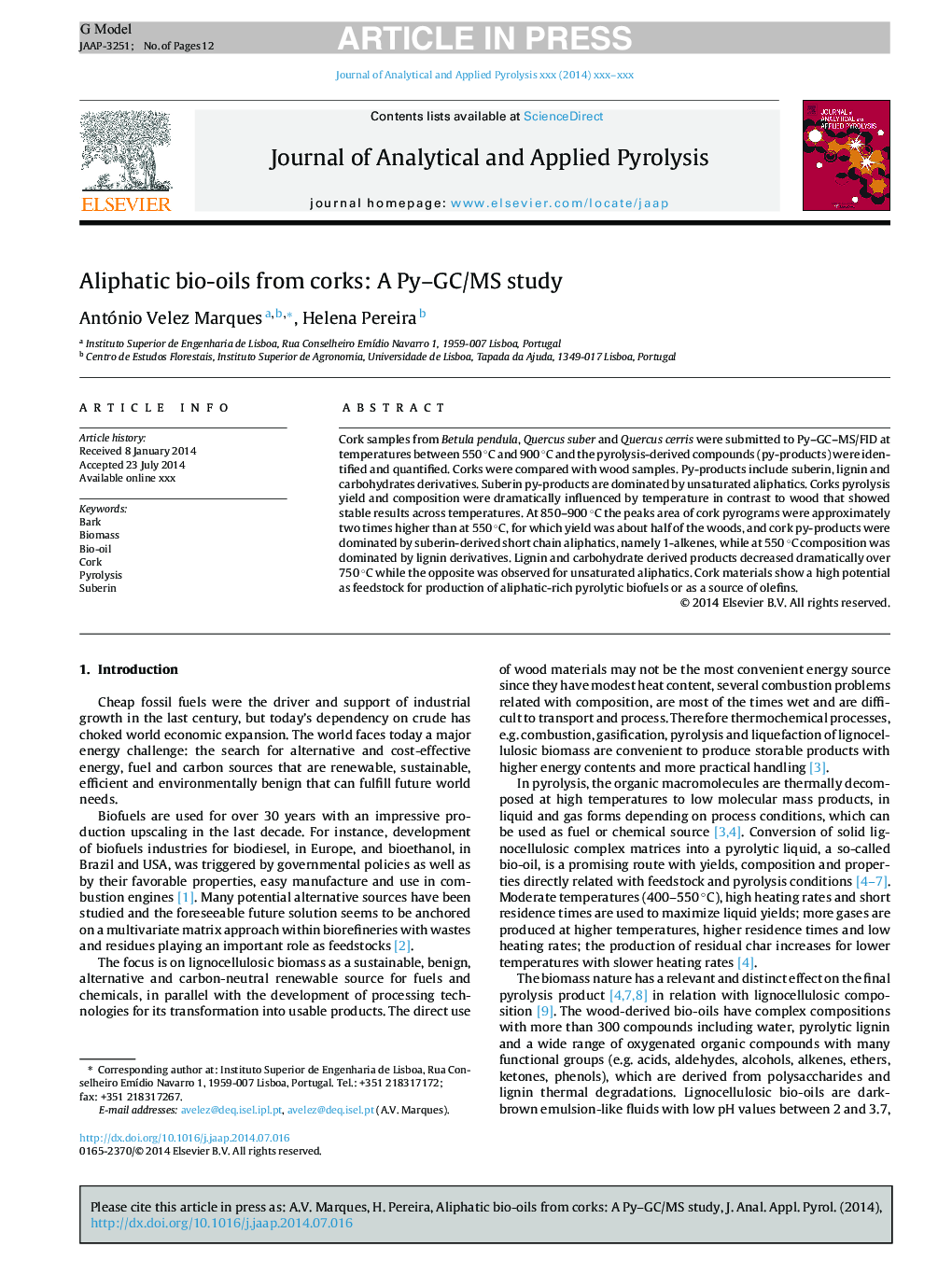| Article ID | Journal | Published Year | Pages | File Type |
|---|---|---|---|---|
| 7606867 | Journal of Analytical and Applied Pyrolysis | 2014 | 12 Pages |
Abstract
Cork samples from Betula pendula, Quercus suber and Quercus cerris were submitted to Py-GC-MS/FID at temperatures between 550 °C and 900 °C and the pyrolysis-derived compounds (py-products) were identified and quantified. Corks were compared with wood samples. Py-products include suberin, lignin and carbohydrates derivatives. Suberin py-products are dominated by unsaturated aliphatics. Corks pyrolysis yield and composition were dramatically influenced by temperature in contrast to wood that showed stable results across temperatures. At 850-900 °C the peaks area of cork pyrograms were approximately two times higher than at 550 °C, for which yield was about half of the woods, and cork py-products were dominated by suberin-derived short chain aliphatics, namely 1-alkenes, while at 550 °C composition was dominated by lignin derivatives. Lignin and carbohydrate derived products decreased dramatically over 750 °C while the opposite was observed for unsaturated aliphatics. Cork materials show a high potential as feedstock for production of aliphatic-rich pyrolytic biofuels or as a source of olefins.
Related Topics
Physical Sciences and Engineering
Chemistry
Analytical Chemistry
Authors
António Velez Marques, Helena Pereira,
